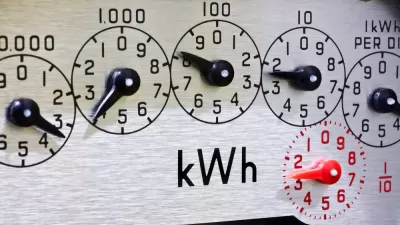A former EPA official makes the case in a New York Times op-ed that the ethanol mandate, a major issue in Monday's presidential caucus in Iowa, the nation's top corn producer, is implemented so poorly that it is not benefiting the environment.
Rather than scrapping the ethanol mandate, as many critics want, Margo Oge, author and former director of the U.S. Environmental Protection Agency's office of transportation and air quality from 1994 to 2012, wants to change the way the mandate, formerly known as the Renewable Fuels Standard (RFS), is implemented.
[The U.S. EPA implements the program in consultation with U.S. Department of Agriculture and the Department of Energy.]
The RFS requires that 36 billion gallons of biofuel must be mixed into gasoline by 2022. "Of that [36 billion gallons], about 85 percent of that blend is supposed to come from a nearly even mix of corn ethanol and cellulosics (derived from wood chips, corn stover, grasses and other nonedible plant parts)." More on the failure to meet this requirement below.
Oge wants to change the question asked to politicians from:
- “Do you support the renewable fuel standard?” to
- “How do we move to the next generation of renewable fuels?”
That's the case she makes in a Nov. 15, 2015, Wall Street Journal debate. "The debate over the Renewable Fuel Standard often falls into a predictable—and misleading—rut: corn ethanol versus petroleum," she argues. "This discussion is a distraction from the bigger issue: how to develop and scale up the next generation of biofuels, like cellulosics."
What's wrong is the approach: "Ethanol thrives because of the volume-based approach of the mandate, which specifies that a growing percentage of various renewable fuels must be mixed into gasoline every year until 2022."
But that approach has stifled innovation and, if its track record to date is any indication, biofuels will not be a major player in meeting our 2050 targets for reducing greenhouse gas emissions from cars and trucks.
A better approach would be "performance based," such as Obama administration's fuel efficiency standard of 54.5 mpg by 2025. There is not one but several ways to meet that goal: battery electric vehicles, hybrids, lighter materials; everything but "clean diesel."
Such an approach is taken by the Low Carbon Fuels Standard (LCFS) in California and the Oregon Clean Fuels Program.
The California program requires fuel producers to reduce greenhouse gas pollution by 10 percent in transportation fuels in 2020. Because it is technology neutral, and interested only in the result, this approach supports investments in the cleanest fuels while providing maximum flexibility to the industry to develop them.
In fact, the LCFS was attacked by both the oil and ethanol industries - talk about strange bedfellows. Out-of-state ethanol refineries felt they would be at a disadvantage in the program. The California Air Resources Board (CARB) won at the Federal Appeals level and the Supreme Court declined to hear a challenge.
That flexibility is not seen in the federal RFS for a variety of challenging reasons:
Because corn ethanol is cheap and easy to produce and was already in use as a gasoline additive before the mandate was imposed, and because existing corn ethanol plants are exempted from greenhouse gas emissions requirements, production has vastly exceeded that of cellulosic ethanol. In 2014, less than 2 percent of the mandated volume of cellulosics was produced.
Oge goes on to recommend changes to the existing RFS program to make it work better. Her strongest point is that the nation can't meet its carbon reduction targets by "(a)dvances in propulsion technology. Passenger cars will have to not only go farther on less fuel, but also travel those miles on lower-carbon fuel."
FULL STORY: The Problem With the Ethanol Mandate That Iowa Loves

Maui's Vacation Rental Debate Turns Ugly
Verbal attacks, misinformation campaigns and fistfights plague a high-stakes debate to convert thousands of vacation rentals into long-term housing.

Planetizen Federal Action Tracker
A weekly monitor of how Trump’s orders and actions are impacting planners and planning in America.

In Urban Planning, AI Prompting Could be the New Design Thinking
Creativity has long been key to great urban design. What if we see AI as our new creative partner?

King County Supportive Housing Program Offers Hope for Unhoused Residents
The county is taking a ‘Housing First’ approach that prioritizes getting people into housing, then offering wraparound supportive services.

Researchers Use AI to Get Clearer Picture of US Housing
Analysts are using artificial intelligence to supercharge their research by allowing them to comb through data faster. Though these AI tools can be error prone, they save time and housing researchers are optimistic about the future.

Making Shared Micromobility More Inclusive
Cities and shared mobility system operators can do more to include people with disabilities in planning and operations, per a new report.
Urban Design for Planners 1: Software Tools
This six-course series explores essential urban design concepts using open source software and equips planners with the tools they need to participate fully in the urban design process.
Planning for Universal Design
Learn the tools for implementing Universal Design in planning regulations.
planning NEXT
Appalachian Highlands Housing Partners
Mpact (founded as Rail~Volution)
City of Camden Redevelopment Agency
City of Astoria
City of Portland
City of Laramie





























